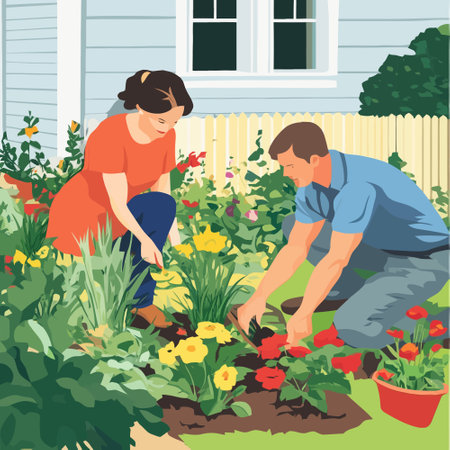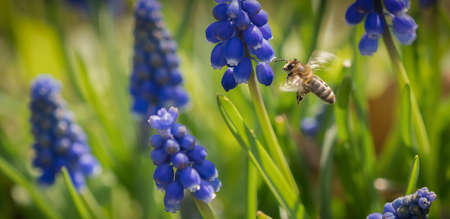Understanding Natural Pest Control
Natural pest control is all about using methods that work with nature, not against it. Instead of reaching for chemical sprays or synthetic pesticides, home gardeners can turn to solutions like beneficial insects, companion planting, and organic deterrents. These approaches help keep unwanted bugs in check while protecting the good guys—like bees and butterflies—that pollinate your flowers and veggies. The benefits are clear: you get healthier soil, safer produce for your family, and a garden that supports local wildlife. Plus, natural pest control fits perfectly with eco-friendly gardening because it encourages balance rather than wiping out entire insect populations. It’s a way to care for your plants that also cares for the planet—a win-win for anyone growing food at home or tending a backyard garden.
2. Why Support Pollinators in Your Garden
Pollinators like bees, butterflies, hummingbirds, and even some beetles are essential for a healthy garden and a thriving ecosystem. Without these hardworking creatures, many of our favorite fruits, vegetables, and flowers simply wouldn’t exist. In fact, nearly one out of every three bites of food we eat depends on pollinators! By supporting pollinators in your garden, you’re not just helping your own harvest—you’re contributing to the broader health of local wildlife and plant communities. Here’s why this matters:
| Pollinator | Key Role in the Garden | What They Need |
|---|---|---|
| Bees | Pollinate crops and wild plants | Nectar-rich flowers, pesticide-free spaces |
| Butterflies | Aid pollination, add beauty | Host plants for caterpillars, sunny areas |
| Hummingbirds | Pollinate tubular flowers, control pests | Brightly colored blooms, safe water sources |
| Beetles & Others | Support biodiversity, break down organic matter | Diverse plantings, natural ground cover |
Protecting pollinators goes hand-in-hand with natural pest control. When you avoid harsh chemicals and encourage a balance of beneficial insects, you create a safer haven for pollinators to thrive. This symbiotic relationship strengthens your garden’s resilience—healthy pollinator populations mean better pollination for your plants and stronger natural defenses against common pests. By making simple changes in your gardening practices, you’re playing a vital part in sustaining local food systems and the natural world right outside your door.

3. Common Natural Pest Control Methods
When it comes to keeping your garden healthy and vibrant, there are several natural pest control strategies that work in harmony with pollinator-friendly practices. These methods not only help manage unwanted bugs but also ensure your bees, butterflies, and other beneficial insects can thrive.
Companion Planting
Companion planting is a time-tested approach where you grow certain plants together to naturally deter pests. For example, marigolds emit a scent that repels aphids and nematodes, while basil planted near tomatoes helps reduce hornworm activity. The key is to choose plant combinations that support each other without producing toxins that could harm pollinators.
Beneficial Insects
Attracting helpful insects like ladybugs, lacewings, and parasitic wasps can make a big difference in pest management. These natural predators feast on common garden pests like aphids, mites, and caterpillars. To invite them into your yard, include a variety of native flowers and flowering herbs such as dill, fennel, or yarrow—these provide food and shelter for the good bugs while being safe for pollinators.
Homemade Repellents
Many gardeners turn to homemade solutions like garlic spray, neem oil (used sparingly), or mild soapy water to keep pests at bay. When using these repellents, its important to apply them early in the morning or late in the evening when pollinators are less active. Always avoid spraying open blooms and follow dilution instructions carefully to minimize any unintended effects on friendly insects.
Low-Impact Is Key
The goal with all these methods is to strike a balance: keep pests under control without creating hazards for pollinators. Focus on targeted treatments, avoid broad-spectrum pesticides—even organic ones—and prioritize diversity in your plant choices to build a resilient garden ecosystem that supports both pest management and pollinator health.
4. Creating a Pollinator-Friendly Environment
Building a garden that both supports pollinators and incorporates natural pest control is about balance and thoughtful choices. Here’s how you can create an inviting space for bees, butterflies, hummingbirds, and beneficial insects—all while keeping pests in check.
Tips for Choosing Native Plants
Native plants are the backbone of a pollinator-friendly garden. They’re adapted to your region, require less maintenance, and provide food and shelter for local pollinators. When selecting plants, aim for diversity in color, bloom time, and height. This ensures nectar and pollen are available throughout the growing season. Here’s a quick guide:
| Region | Example Native Plants |
|---|---|
| Northeast | Bee Balm, Black-eyed Susan, Wild Bergamot |
| Southeast | Coreopsis, Purple Coneflower, Butterfly Weed |
| Midwest | Prairie Blazing Star, Milkweed, Aster |
| West Coast | California Poppy, Salvia, Yarrow |
Providing Water Sources for Pollinators
A reliable water source is essential for pollinators. You don’t need a fancy pond—even a shallow dish with pebbles or marbles works well. Make sure the water is fresh and the stones give insects a place to land safely while they drink.
Simple Water Source Ideas:
- Birdbaths with rocks or floating corks for landing spots
- Shallow saucers filled with water placed at different spots in your yard
- Mud puddles or damp sand patches (especially helpful for butterflies)
Creating Habitats to Attract & Sustain Pollinators
Beyond flowers and water, pollinators need safe places to nest and overwinter. Leave some brush piles, dead wood, or uncut grass in tucked-away areas of your yard. You can also set up bee hotels or leave hollow stems standing through winter.
Attracting Pollinators While Practicing Pest Control:
- Avoid broad-spectrum insecticides—opt for targeted treatments like neem oil or insecticidal soap only where needed.
- Plant “trap crops” (like nasturtiums) away from main beds to lure pests away from more valuable plants without harming pollinators.
- Encourage beneficial insects (ladybugs, lacewings) by providing their favorite habitats and food sources—they’ll naturally reduce pest populations.
Cultivating a pollinator haven doesn’t have to conflict with pest management goals—in fact, they often go hand-in-hand when you work with nature rather than against it.
5. Avoiding Harm to Pollinators While Managing Pests
Protecting pollinators while tackling garden pests can feel like a tightrope walk, but with the right strategies, you can strike that delicate balance. Timing is everything—apply any pest control measures in the early morning or late evening, when bees and butterflies are less active. This reduces their direct exposure to even natural sprays or treatments. When it comes to targeting pests, precision matters. Spot-treat only affected plants instead of blanketing your entire garden. Use physical barriers, like row covers or netting, on specific crops rather than general insecticides. For product choices, always select those labeled as safe for pollinators—look for OMRI-listed solutions and avoid broad-spectrum insecticides altogether. Homemade remedies like neem oil or insecticidal soap should be used sparingly and never during bloom time, since pollinators are most attracted to flowers then. Rotate your pest management tools regularly so you’re not over-relying on one method, which helps keep both pests and pollinator populations healthy. By paying attention to timing, being selective in your treatments, and choosing the right products, you’ll foster a thriving garden that’s both pest-free and welcoming to vital pollinators.
6. Integrating Both Approaches for Garden Success
Bringing together natural pest control and pollinator-friendly practices in your home garden doesn’t have to be complicated—it just takes a little thoughtful planning and regular care. Start by mapping out your garden layout, making sure to include a diverse mix of flowering plants and herbs that bloom at different times of the season. This ensures there’s always something attractive for pollinators, while also discouraging pests through biodiversity.
Use companion planting as your foundation. Pair up crops like tomatoes with basil or marigolds to naturally repel pests while still attracting beneficial insects. Plan your garden beds so there’s space for native flowers between rows of vegetables; these will serve as both pest repellents and pollinator magnets. Avoid monoculture patches, as they tend to invite pest outbreaks and don’t support a healthy ecosystem.
When it comes to maintenance, make it a habit to inspect your plants regularly. Handpick any pests you spot, and use organic solutions only when necessary—always avoiding spraying during peak pollinator activity, typically midday when bees are most active. Consider mulching with straw or wood chips to regulate soil moisture and create habitat for ground-dwelling beneficial insects like beetles.
Water early in the morning to give leaves time to dry out before evening, helping prevent fungal diseases without disturbing pollinators. If you must use any treatment, opt for spot applications instead of broadcast spraying. Remember to leave some “wild” corners in your yard with native grasses or brush piles; these provide shelter for pollinators and predatory insects alike.
Season by season, rotate your crops and refresh your flowering borders so that every year your garden becomes more resilient and self-sustaining. Keep records of what works best—both in terms of keeping pests at bay and inviting in those vital pollinators. By planning ahead and nurturing this balance, you’ll enjoy healthier plants, bigger harvests, and a vibrant backyard ecosystem that supports itself naturally.


